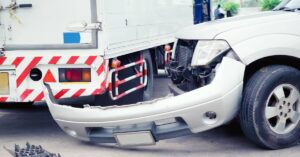Working in construction is among the most dangerous jobs in the nation and the potential causes of construction accidents are wide-ranging. Unfortunately, many construction workers get injured on the job—and, as a result, they find themselves needing to assert their right to just compensation.
When you get injured in a construction accident, determining the cause of the accident is critical for determining what claim (or claims) you can file. While construction workers can claim “no fault” workers’ compensation benefits in many cases, these benefits don’t cover all of the costs of a work-related injury. To recover all of your costs, you will need to file a claim outside of workers’ comp, and this means that you will need to know (and be able to prove) why you got injured.
10 Leading Causes of Construction Accidents According to OSHA
The U.S. Occupational Safety and Health Administration (OSHA) maintains a list of the most common safety violations that lead to construction accidents. According to OSHA’s most-recent list, some of the leading causes of construction accidents are:
1. Inadequate Fall Protection
Falls are among the most common construction site accidents, and inadequate fall protection is among the leading causes of serious and fatal falls. This includes inadequate railings on construction sites and scaffolding as well as inadequate access to harnesses and other necessary safety equipment.
2. Inadequate Hazard Communication
Effective communication is essential for mitigating the risk of accidents on construction sites. Inadequate hazard communication can leave construction workers exposed to safety risks unknowingly and unnecessarily. This includes failure to label containers of hazardous materials as well as failure to adequately communicate other job site safety risks.
3. Dangerous Ladders
Ladders are essential equipment on many construction sites. Unfortunately, many of the ladders to which construction workers have access are not as safe as they should be. From ladders that are too short to ladders that are in need of maintenance or repair, all types of dangerous ladders can (and do) lead to accidents on the job.
4. Inadequate Respiratory Protection
For construction workers who work around dangerous fumes or particulates, adequate respiratory protection is critical. Inhaling dangerous fumes or particulates can present a variety of health risks, from lung damage to multiple forms of cancer.
5. Dangerous Scaffolding
Along with dangerous ladders, dangerous scaffolding is among the most common causes of construction accidents as well. Common scaffolding-related issues include negligent scaffolding construction, inadequate scaffolding inspection, and failures caused by insufficient or faulty maintenance.
6. Electrocutions
Electrical hazards on construction sites can present risks for all workers who are present. Faulty wiring and failure to follow appropriate lockout/tagout procedures are among the leading causes of electrocution for construction workers in all trades and occupations.
7. Forklift Accidents
Forklift accidents on construction sites can also result from a variety of different causes, and they can lead to a variety of different types of injuries. Some of the most common causes of forklift accidents include negligent operation, negligent maintenance, and lack of supervision.
8. Inadequate Fall Protection Training
As a construction worker, simply having access to fall protection equipment isn’t enough. You also need to know how to use this equipment, and you need to know what is safe (and what isn’t) when working above the ground. Co-workers’ failure to observe proper safety practices is a major concern for many construction workers as well.
9. Inadequate Eye and Face Protection
From welding to operating saws and other hand tools and power tools, many jobs on construction sites require eye and face protection to prevent serious injuries. If you suffered an eye or face injury because you did not have access to adequate protection (i.e., an appropriate welding mask or safety goggles), you will want to discuss this with your lawyer.
10. Inadequate Machine Guarding
Finally, inadequate machine guarding can lead to eye, face, and other injuries as well. Whether a machine, tool, or other piece of equipment is sold without adequate guarding or its guarding has been removed, this can present unnecessary risks and lead to injuries that could—and should—have been avoided.
Request a FREE Consultation with an Arkansas Construction Accident Lawyer
Were you (or a loved one) injured in a construction accident? If so, we strongly encourage you to speak with one of our lawyers about your legal rights. Our experienced construction accident lawyers help clients throughout Arkansas and across the United States.
To learn how much you may be entitled to recover, give us a call at 479-202-5200 or contact us online today. Your initial consultation is completely FREE, and you pay nothing unless we win your case.
a Free Consultation



